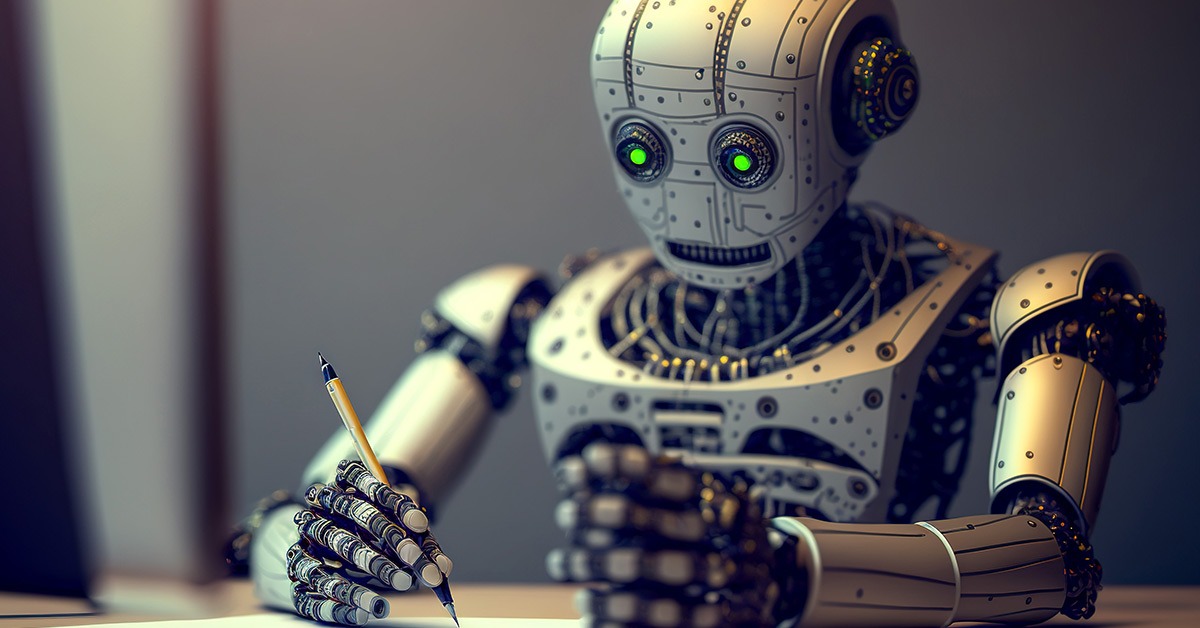In this digital era, we stand at the forefront of a technological revolution, witnessing the incredible potential of artificial intelligence (AI) that is continuously breaking boundaries and reshaping our world. One of the most intriguing breakthroughs in this tech revolution has been the emergence of AI writing – a remarkable feat of engineering that has irreversibly transformed the dynamics of content creation.
Once a far-off science fiction concept, AI writing is now an integral part of our digital lives, often operating behind the scenes in ways we don’t even realize. Think of the intelligent chatbots that assist you with online shopping or the highly personalized email campaigns that hit your inbox just when you need them. How about the creative content suggested by your favorite writing app? Or even more impressive, an AI producing an entire article or a book? The driving force behind all these instances is AI writing.
These powerful AI algorithms are reshaping how content is produced, consumed, and perceived across the globe. The sheer volume and diversity of content they can produce at astonishing speed is undoubtedly a game-changer. In this process, AI has provided us with tools to scale up content production and opened up a whole new realm of possibilities for individualized, dynamic, and contextually relevant content that was previously unimaginable.
But as with any powerful technology, the revolution brought by AI writing is not without its implications and consequences. It has raised thought-provoking questions and sparked intense debates around the ethical aspects of AI-generated content. Issues of originality, authorship, plagiarism, and unconscious bias in AI writing have emerged as crucial ethical concerns that demand our immediate attention.
With these complex questions on the table, it’s crucial to consider the necessity of a ‘human in the loop’ in AI writing. This concept, though simple, might be the key to addressing the ethical dilemmas we face and paving the way for a more responsible, ethical, and human-centered future of AI writing.
So, without further ado, let’s dive into the intriguing world of AI writing, explore its ethical landscape, and understand why the ‘human in the loop’ concept is a game-changer. Are you ready? Let’s go!
The Confluence of Technology and Creativity
AI writing is the use of machine learning algorithms to generate human-like text. These AI-powered programs can create articles, emails, blog posts, and even books, replicating human-like language patterns and creativity. They’re trained on massive amounts of data, learning from every piece of text they encounter.
How AI Writing Works
AI writing involves natural language processing (NLP), a subset of AI that allows machines to understand, interpret, and generate human language. With the input of a prompt, these AI models, like GPT-3 or GPT-4, analyze patterns, predict the next possible words or sentences, and deliver readable and often contextually relevant text.
The Emergence of Ethical Questions in AI Writing
While AI writing has enormous potential, it also raises ethical questions that need addressing.
Issues of Originality
One of the main concerns is about the originality of AI-created content. If an AI generates an article based on existing data, who owns the copyright? Can AI-generated text ever be ‘unique’? This blurring line calls for a reevaluation of what we consider as ‘original content.’
Bias in AI Writing? A Sneaky Issue
AI models, being non-human, are free from bias. But the truth is, they can unknowingly echo the biases in their training data, subtly fostering stereotypes in their content. This can range from gender to racial bias, indirectly influencing perceptions.
This challenge isn’t just about tweaking technology. It emphasizes the need to ensure the ethical integrity of AI-generated content, underlining the importance of a ‘human in the loop.’ But what does this mean?
The Importance of ‘Human in the Loop’
Despite these issues, one solution stands out: keeping a ‘human in the loop.’
AI-Human Collaboration for More Ethical Writing
The idea is to use AI as a tool, not a replacement. A human writer can use AI to generate content but should also review and modify it as necessary. This way, they can ensure the output is ethical, unbiased, and truly unique.
Preventing Bias with Human Oversight
Human oversight also plays a crucial role in preventing bias in AI-generated content. By reviewing the AI’s work, a human can spot any inadvertent biases (assuming they don’t have, ensuring the content aligns with the values we want to uphold in our society. This works in principle, but when you consider most humans have their own biases to deal with, it still leaves the potential for AI to reinforce what that human is already thinking or feeling simply. In a perfect world, however, our common desire to remove these biases outweighs our personal feelings.
With the ethical implications being addressed, the ‘human in the loop’ approach ushers in an exciting era of AI writing. Let’s take a peek into the future, shall we?
Evolving Role of Content Writers
In the future, the role of content writers is likely to remain the same, but evolve. With AI taking care of the heavy lifting, writers will have more room to refine the content, infuse creativity, and uphold ethical standards. Isn’t that an exhilarating thought?
Improved AI Systems
As we keep the conversation about ethics in AI writing alive, we can also expect improvements in AI systems. The creators of these AI models will have to design systems that are more sensitive to ethical issues and biases, leading to more responsible AI tools.
Conclusion
To wrap it up, the future of AI writing appears promising yet complex. The ‘human in the loop’ concept offers a solution to today’s ethical dilemmas. Combining human oversight with AI’s capabilities can create a more ethical, unique, and engaging content landscape. After all, isn’t it all about striking the perfect balance between man and machine?
The best way forward, in my opinion, is a symbiotic relationship where AI assists in content generation, and humans ensure ethical standards. Together, we can leverage the best of both worlds – AI’s efficiency and human ethical judgment.
Keep Reading
Want more? Here are some other blog posts you might be interested in.
The MVP—Minimum Viable Product—has become gospel in startup circles. Build fast, test fast, fail fast. But in today’s crowded market, viability ...
The startup myth goes like this: work 20-hour days, pivot constantly, chase the high of the new. That’s what makes a ...
Most founders build their first leadership teams for speed, comfort, and alignment. Understandably, you’re strapped for time and need people who ...
For founders and growing companies
Get all the tips, stories and resources you didn’t know you needed – straight to your email!



